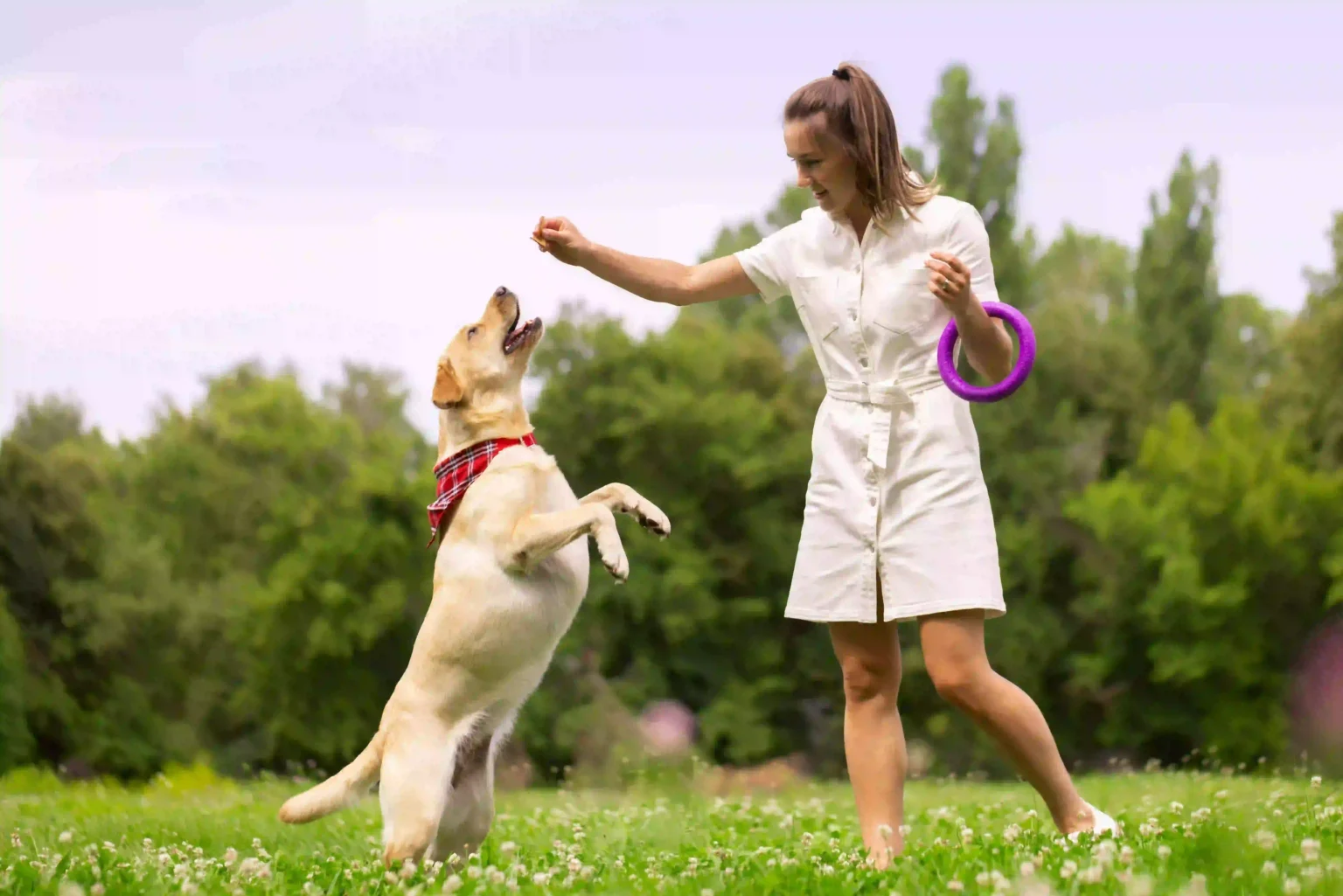Beginning the adventure of sharing your life with a canine partner highlights the significance of excellent conduct in your canine companion. Beyond transparent convenience, being able to train your dog and command their attention is critical for their safety and the development of a healthy connection.
A well-behaved dog adds to a pleasant living environment by fostering trust and mutual understanding. We will dig into a repertory of practical strategies in the next sections of this guide, bringing insights into the art of training your dog to listen regardless of the distractions that may be present in their dynamic surroundings.
Money can buy you a fine dog, but only love can make him wag his tail.
Serena Williams
Communication is essential in the world of dog training. We will discover the necessity of creating a firm foundation with simple instructions, the power of positive reinforcement, and the progressive introduction of distractions as we traverse the complexities of canine behavior. Exploring these strategies will provide you with the tools you require to foster unshakeable loyalty in your dog, improving your shared experiences and deepening your relationship with your four-legged friend.
Build a Strong Foundation with Basic Commands:
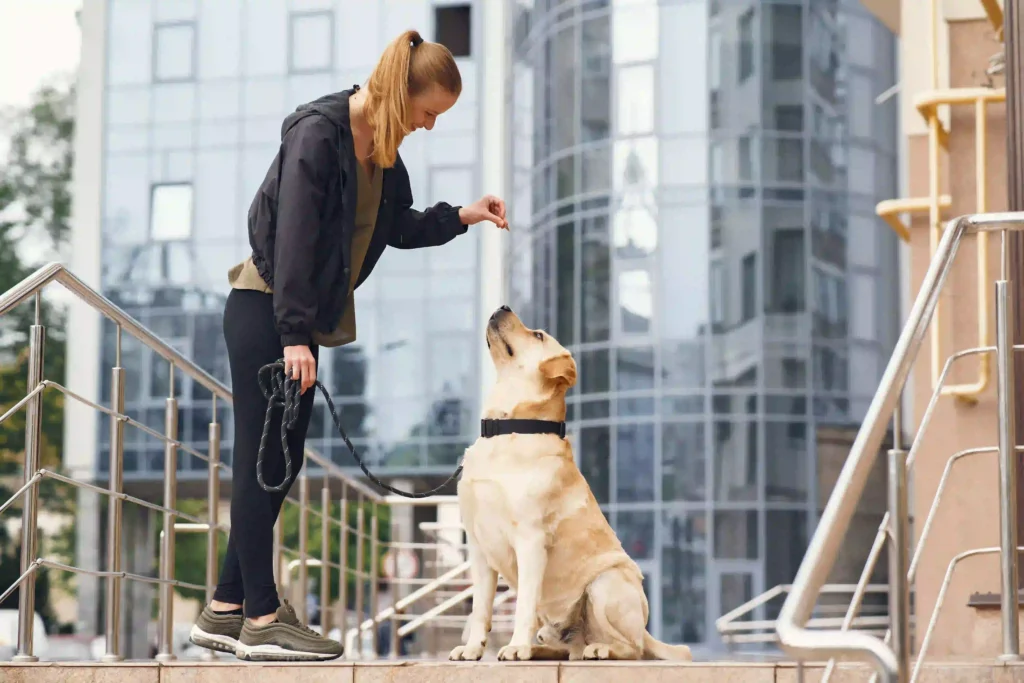
Begin your dog’s training adventure by laying the groundwork with essential commands.
- Core Commands:
- “Sit,” “Stay,” “Come,” and “Leave it” are all important building blocks.
- These directives lay the groundwork for efficient communication.
- Communication Framework:
- The framework for clear communication between you and your dog.
- Repeated use creates a shared language.
- Situational Versatility:
- Practice these instructions in a variety of scenarios.
- Assists your dog in understanding and dependably responding to your expectations.
Consistency is Key:
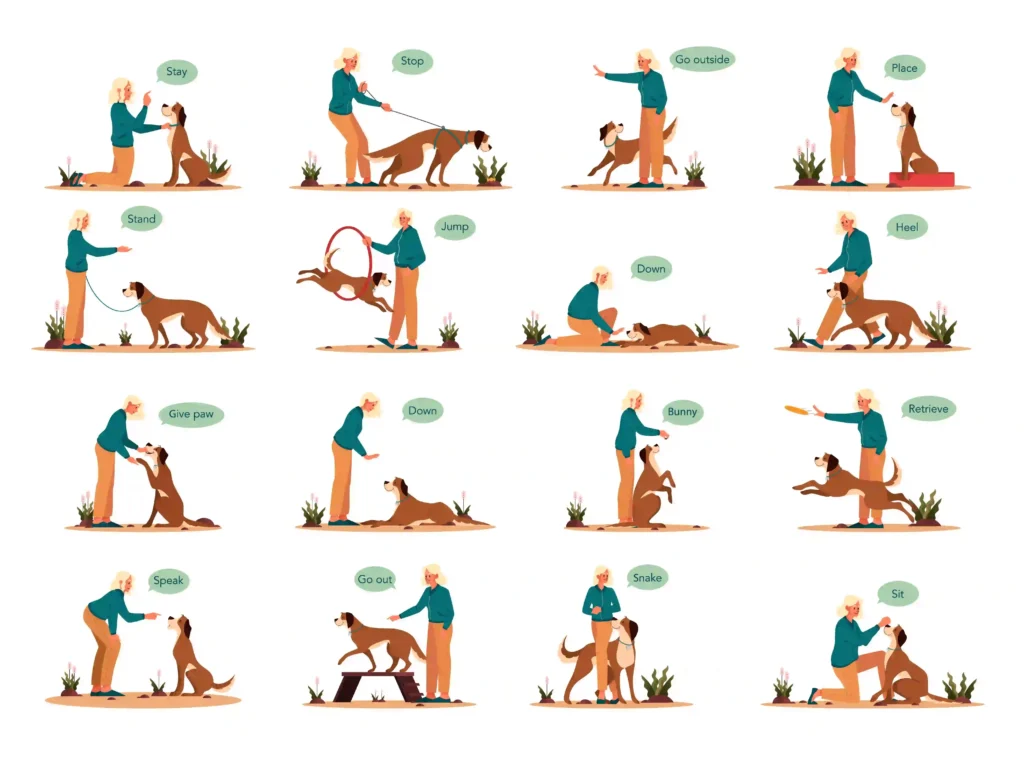
The phrase “Consistency is Key” is an unbreakable reality in the world of effective dog training. This idea acts as a foundation, directing the effectiveness of your training activities.
It entails continuously using the same orders and gestures, creating a dependable and predictable environment for your canine partner. Maintaining consistency requires ensuring that all members of the home are on the same page, utilizing the same language and cues. Dogs, being creatures of habit, enjoy surroundings where expectations are consistent. The repeating nature of regular orders and actions aids in the reinforcement of desired behaviors, resulting in a well-trained and satisfied dog.
By following the consistency principle, you not only create a systematic training routine, but you also create a pleasant environment in which your dog feels comfortable, understood, and encouraged to participate positively in the training process.
Positive Reinforcement:
In the arsenal of good dog training, positive reinforcement is a strong and compassionate weapon. Dogs, as sociable animals, respond exceptionally strongly to positive stimuli. The emphasis in positive reinforcement is on immediately and consistently acknowledging and rewarding favorable actions. When your dog obeys a command, whether it’s as basic as “sit” or as complicated as “stay,” instant incentives like cookies, praise, or love act as positive reinforcement.
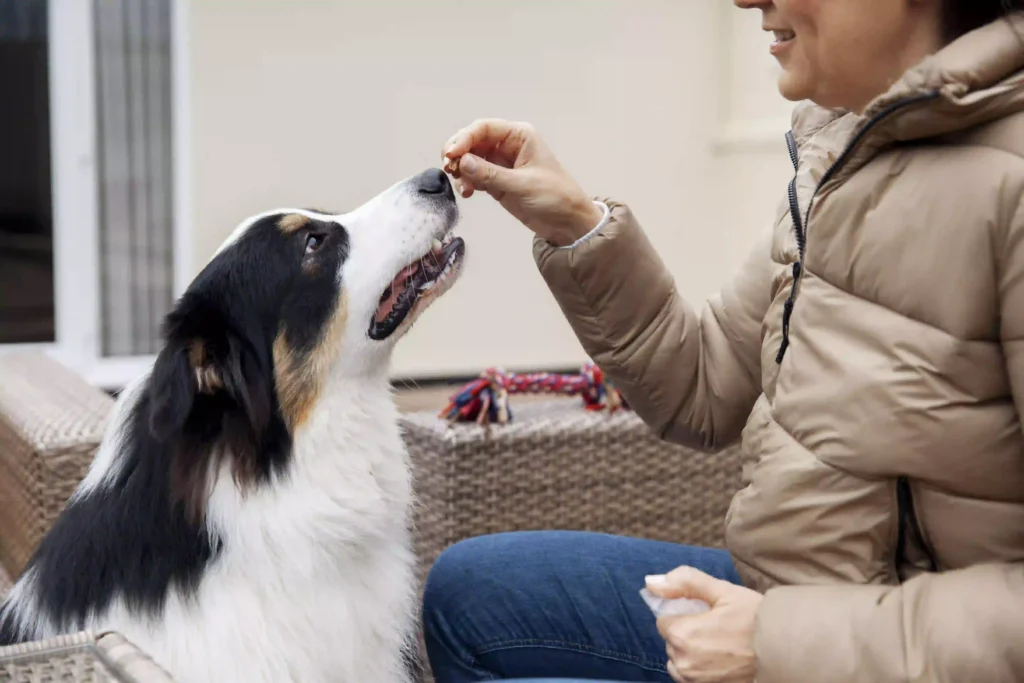
This fosters an atmosphere in which your dog is driven to repeat the behavior for the enjoyable consequence, creating a positive link between the activity and the reward. The key to positive reinforcement’s effectiveness is the prompt and constant delivery of incentives, which reinforces the link between the desired action and the good result. By incorporating this method into your training routine, you will not only encourage your dog to learn and obey directions, but you will also lay the groundwork for a trusting and happy connection based on mutual understanding and collaboration.
Mastering Distractions:
Master distractions in your dog’s training program to overcome the challenge of real-world circumstances. Begin the procedure in a safe, distraction-free area before progressively introducing modest distractions like people, animals, or attractive odors. Increase the complexity gradually, reinforcing orders consistently in the face of distractions. Reward your dog immediately for maintaining focused obedience, establishing resilience, and responsiveness in a variety of contexts.
- Gradual Exposure:
- Begin training in an uncluttered setting.
- Introduce little distractions gradually.
- Increase the complexity of distractions gradually.
- Types of Distractions:
- Other people, animals, or appealing odors are examples of distractions.
- Play out real-world events to improve flexibility.
- Consistent Reinforcement:
- Ensure that directives are consistently reinforced in distractions.
- As soon as your dog maintains concentrated obedience, praise him.
- Increase resilience and response in a variety of contexts.
Train in Different Locations:
Training a dog to flourish in several contexts necessitates a planned approach, as dogs do not readily generalize habits across diverse environments.
Training a dog is about building a bond of trust and understanding. To achieve this, one must go beyond the comfort of a familiar setting and expose the dog to different environments, fostering a connection that transcends specific locations.
Cesar Millan
To combat this issue, expand your training locations beyond the limits of your house, such as the backyard, parks, or even on walks. By rehearsing commands in a variety of settings, you teach your dog that these instructions are applicable everywhere, not only in certain situations. This method improves your dog’s flexibility by ensuring that acquired behaviors are not limited to a single situation but may be successfully implemented in any scenario, resulting in a well-rounded and responsive canine companion.
Millan’s viewpoint highlights the necessity of training in a variety of settings, emphasizing its function in developing the link between owner and dog via shared experiences in a variety of situations.
Proofing Commands:
Proofing order is a critical stage in dog training that aims to produce consistent answers in every situation.
- Increased Difficulty:
- Systematically increase distractions and distance.
- Ensure that orders are obeyed consistently in a variety of settings.
- Practicing at a Distance:
- Educate your dog on how to respond to orders from a distance.
- Improves their capacity to listen and obey regardless of distance.
- Introducing Different Environments:
- During training, expose your dog to a variety of environments.
- Promotes compliance in strange or exciting environments.
- Obedience in Exciting settings:
- Test your dog’s obedience by asking for it in exciting settings.
- Improves response in the face of excitement and distraction.
Professional Training Classes:
The choice of professional dog training lessons with a licensed dog trainer is a wise decision to improve your canine companion’s training journey. These sessions provide organized supervision, professional counsel, and essential socialization opportunities, all of which contribute to the development of a well-rounded and disciplined dog.
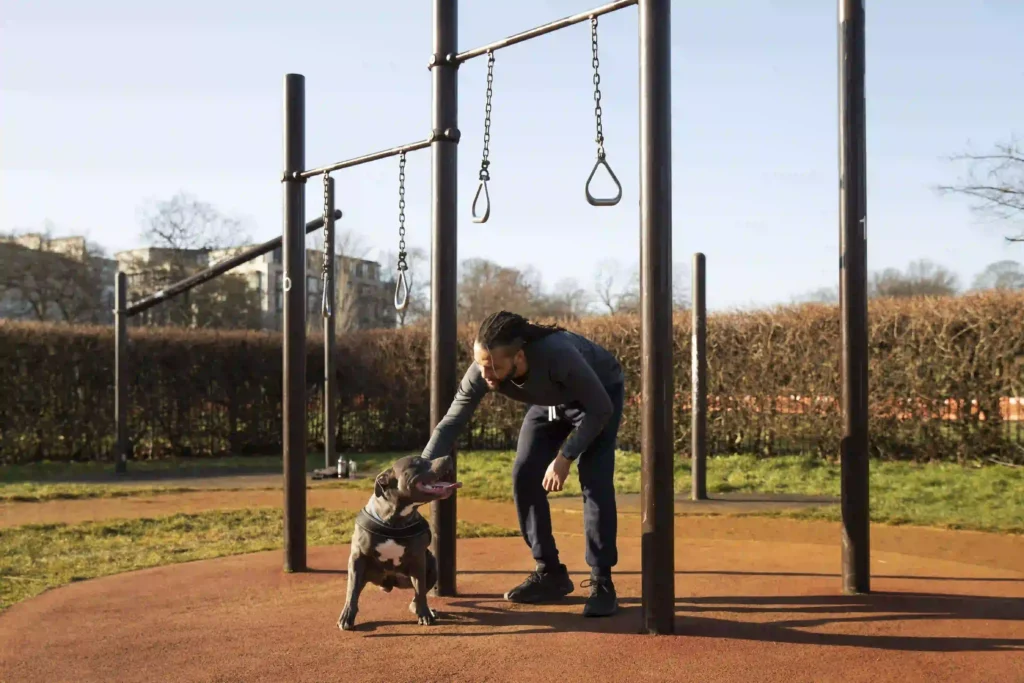
Enrolling in such programs allows you and your dog to benefit from the trainer’s knowledge in a controlled and supervised environment. Professional training sessions cover not just basic obedience but also provide specific help in dealing with complex behaviors that may be more difficult to handle on your own. This controlled atmosphere is especially beneficial for dogs who are obstinate since it gives a concentrated and targeted approach to their requirements.
Patience and Understanding:
Patience and understanding are essential components of effective dog training.
- Individual Learning Pace:
- Recognize that dogs’ learning curves differ.
- Avoid becoming frustrated if your dog does not respond quickly.
- Emotional Sensitivity:
- During training, dogs pick up on their owners’ emotions.
- Negative energy can interfere with learning.
- Calm attitude:
- During training, have a patient and calm attitude.
- Help to create a positive learning atmosphere.
- Learning Time:
- Recognize that learning is a lengthy process.
- Give your dog the time he needs to understand orders.
Regular Exercise and Mental Stimulation:
A comprehensive approach to ensuring a responsive and well-behaved canine partner includes frequent exercise and mental stimulation. A fatigued dog is more likely to listen and follow, thus activities such as puzzle toys, interactive games, and regular walks should be incorporated into their schedule.
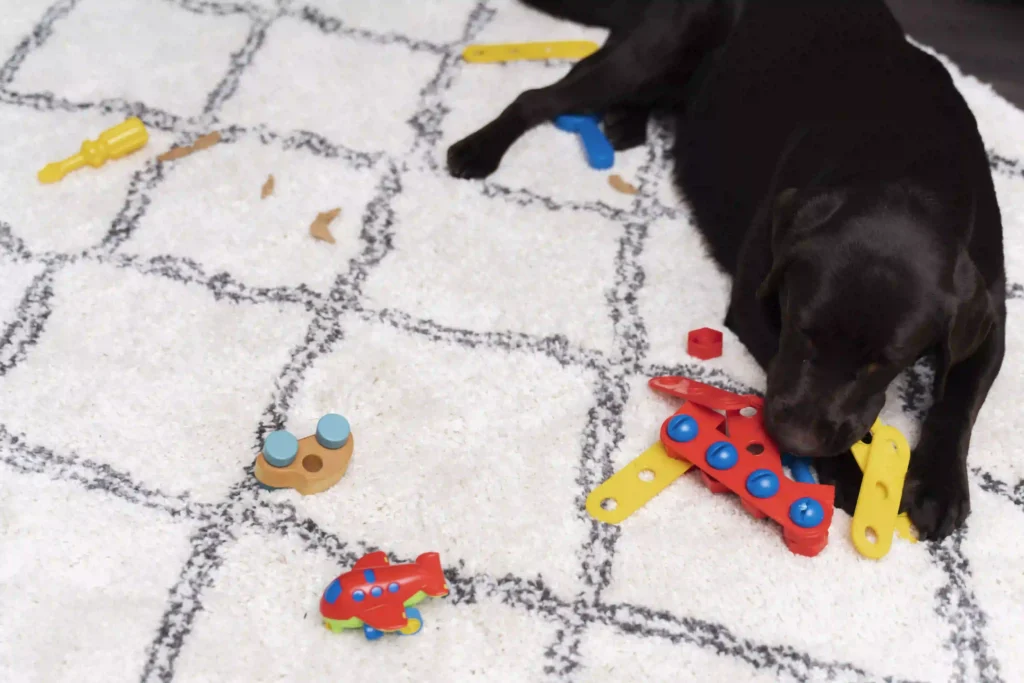
This combination not only burns surplus energy but also boosts physical and mental wellness, improving attention and reactivity during workouts. You create an atmosphere in which training becomes a pleasurable and rewarding part of your dog’s everyday life by addressing both physical and mental demands.
You will also love this “The Importance of Pet Insurance: Protecting Your Furry Friend from Unexpected Medical Expenses“
Conclusion:
Training your dog to listen is a wonderful experience that develops your relationship with your pet. You can establish obedience in your dog that endures the test of time with a firm foundation of fundamental commands, consistency, positive reinforcement, and gradual introduction to distractions. Remember that patience, understanding, and love are the keys to your combined training adventure’s success.

